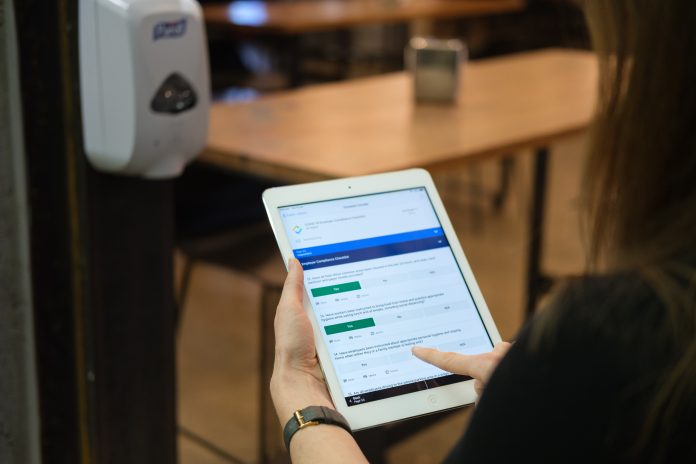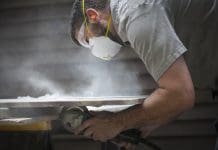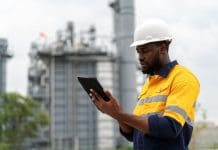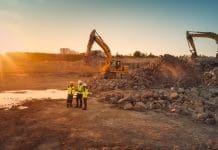Dan Joyce, general manager EMEA, SafetyCulture, explains how construction companies can nail safety in the face of a pandemic
While health and safety has always been intrinsic to the construction industry and rigorous safety measures are the norm, the Covid-19 pandemic has presented the industry with a completely new set of challenges.
As the world gets back to business, the key challenge for construction companies lies in normalising new safety procedures, ramping up operations as construction in the UK returns to normal levels, and minimising the risk of Covid-19 to be contracted and spread on-site — resulting in paused projects and putting communities in the local area at risk.
In a Covid-19 world
The increased health and safety responsibility for businesses demands a shift in how workplace safety is managed. To stay ahead in today’s environment, managing health and safety can no longer simply be a box-ticking exercise to meet compliance requirements.
Previously the responsibility of operational teams, it should now be top of the agenda for all business leaders and involve all employees. They say two heads are better than one, and this statement couldn’t be truer than when it comes to safety; equipping each member of staff with the knowledge and tools to manage safety themselves makes a safer environment for everyone. This new way of working requires both careful planning and stringent ongoing management.
In recent months, construction businesses around the world have been recognising the benefits of empowering their employees when it comes to safety. Coupled with the tightening regulations as a result of the pandemic, and increasing scrutiny from the public and stakeholders, this has been driving companies to invest in automated systems to help identify and mitigate risks to their organisation.
Here are three top ways the construction sector can use technology to nail health and safety:
The construction industry is used to dealing with difficult times and adapting to change, yet the problems presented by Covid-19 have set apart the businesses that had digitised before lockdown and those who had not, giving the former the edge.
In an environment coping with the risk of coronavirus, traditional inspection processes – with weekly or monthly checks – are no longer enough. Health risks need to be identified and resolved quickly to protect employees and customers and, to do this, checks need to be happening daily, if not multiple times a day. There is no doubt that the traditional approach to compliance has changed.
SafetyCulture’s workplace safety app
iAuditor makes carrying out risk assessments and managing issues easy and efficient – 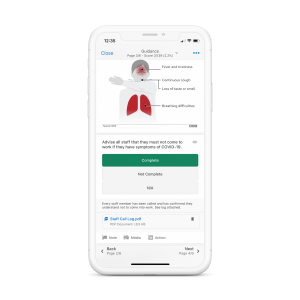 with simple checklists that any team member can use with no other equipment needed other than a mobile device.
with simple checklists that any team member can use with no other equipment needed other than a mobile device.
Through iAuditor, we’ve seen that companies that have already digitised their safety processes before going into lockdown have been able to manage the impacts of the pandemic much more efficiently than those who have been forced to turn to technology at the last minute. For instance, due to using iAuditor, leading engineered steel solutions company William Hare was able to ensure that its team could manage its operations safely during the pandemic without having to shut down any sites.
Equally, those companies that were still relying on traditional methods have swiftly seen the benefits of digitising their processes. Since the start of the pandemic we’ve helped companies including Redrow, SNC Lavalin, Atkins and TClarke to ensure they can continue their operations, while keeping their employees safe.
The right technology can not only revolutionise the way businesses meet and maintain safety standards but also contribute to business continuity. What is clear now more than ever, is that businesses need to invest in technology to help manage health and safety; they can’t afford not to.
Empower staff to take a role in workplace safety
The days of compliance being the responsibility of only certain individuals in an organisation is in the past. It’s important for businesses to give employees the confidence, authority and means to take an active role in safety. One way of doing this is by investing in the right tools that enable employees to be the eyes and ears of the organisation.
Companies should look to equip their workforce with simple, user-friendly and intuitive devices that allow them to identify breaches in safety and educate them on the correct response, whether that is fixing the problem or escalating it to senior staff – leading to swift resolution of the issue.
Again, technology plays a key role here. For example, using iAuditor, teams are able to record and manage incidents in real-time, assigning team members to resolve the issues as needed.
SafetyCulture’s new ‘Incidents’ product further helps to bring workers concerns’ front and centre. Team members are able to capture anything that concerns them, from a lack of hand sanitiser in a key location to flawed processes that don’t allow workers to socially distance. This gives teams the confidence to be proactive in identifying and resolving risks, ensuring that they are helping to create an environment where they feel comfortable and where they want to work. Digital platforms can help construction companies to have a robust communication structure that connects all the elements of the chain.
Use checklists for transparency
At SafetyCulture, we’ve launched a global initiative called Safely Back to Business to support companies in their efforts to keep customers and staff safe. We’ve digitised Covid-19 guidance from governments and leading industry bodies into simple to use and fully customisable checklists. These checklists have been made freely available to workers on the front line, and the response has been fantastic as many sectors look for further guidance.
On 23 March, the week prior to the UK government mandating gatherings of less than 10 people, we saw a 186% increase in Covid-19 inspections using our iAuditor app. Since then, we have seen businesses conduct more and more inspections, growing a further 11% week on week.
Sectors like construction that are used to operating in high risk environments have typically adapted well in the short term to the safety procedures required for Covid-19, however as the government guidelines evolve as Covid-19 progresses, technology can play an important role in making sure companies continue to manage health and safety successfully.

Dan Joyce
General manager
EMEA


